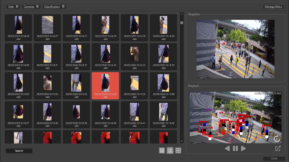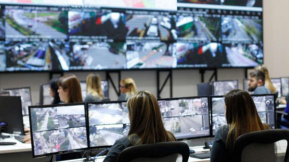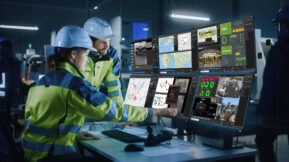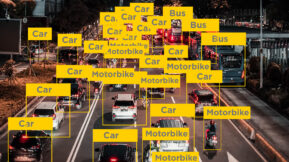VMS makes economic sense for IP CCTV systems.
If the capital cost of VMS and NVR-based IP CCTV systems is similar then the VMS option makes most economic sense.

VMS and NVR-based IP CCTV systems now cost very similar amounts. This is primarily because the servers, HDDs and NAS storage platforms used to run VMS systems have reduced in price. In this article, we consider the cost of ownership of each type of IP CCTV system and demonstrates that the VMS option is not only cheaper, but also a better investment over time.
IP CCTV system expansion
Most IP CCTV systems are updated and expanded on a number of occasions during their life span. The video hardware used in the update may be from different manufacturers. An open-platform VMS is designed to support the widest possible range of video cameras. This reduces obsolescence and enables the re-use of existing site cameras, such as PTZ domes, reducing costs.
Integration and compatibility
A VMS system has a distributed IT architecture using servers for video processing. Storage can be within the server (for smaller applications) or on specialist NAS (network attached storage) for larger systems which allow for RAID and failover options. Not only is the VMS compatible with the operating systems running the servers and NAS, but it also operates with the PCs, tablets and smartphones viewing the system and the video cameras being controlled.
When an NVR manufacturer provides comparable functionality, camera control and remote access, the options are more limited. Integrators can find themselves locked into a single, or limited number of brands, restricting functionality options as the system grows. Open-platform VMS companies actively update all integration points of a system, for maximum reliability.
Camera and server scalability
VMS systems offer incredible scalability. As a VMS system grows, it is simple to predict server, network and storage requirements. VMS systems do not expand in 8 or 16 channel “blocks”, like NVRs. This means only the channels needed are paid for. Camera to server density can easily exceed 100 Full HD cameras, which in processing terms could be 2,500 images per second. This is far beyond the capability of most NVRs.
As more cameras are added, so too are VMS licenses. When more processing power is required, servers can be added to the system without affecting live operation.
Automation
A VMS enables data to be gathered automatically via video analytics. This data can provide vital insight into human behavior on site, such as people counting, footfall, loitering and dwell times. Human tasks may be automated, for instance opening gates and barriers on recognition of a vehicle license plate. Alarms can be triggered by motion, trip wires, loitering and wrong direction, so sites require fewer or no operators. This adds value and accuracy to the system and saves equipment, installation and operational costs. If analytics can replace lower level alarm systems, it is often possible to avoid the cost of additional civil works and cabling.
Comparing VMS and NVR cost of ownership.
I have used the example of a 90 camera, Full HD, IP CCTV system to compare VMS and NVR solutions. Assume the system will grow to 120 cameras within 5 years, remain in place for 10 years and all the hardware used has a three year warranty.
Six, 16 channel NVRs would be needed with a dedicated PC for central control. If the NVRs are replaced as the warranty runs out, the entire system is renewed after 3, 6 and 9 years. Two additional NVRs will be required when the system expands to 120 cameras, introducing potential compatibility issues. The additional cameras may need to be from the same manufacturer as the NVR to ensure compatibility.
A 90 camera VMS system can be deployed on a single server with a NAS drive for storage. 90 channel licenses would be required. After 3 years the server and NAS may need replacing, like the NVR solution, but the software remains current and can be simply transferred. When the system is upgraded to 120 cameras, additional licenses are necessary, but the same server and NAS (with extra storage) can be used.
Cost benefits of IT infrastructure
The servers and storage devices used in VMS systems are standard IT equipment with intrinsic safe-guards. As a result, alerts, warnings and messages will be sent when faults are detected, often preventing failure. The system will be reliable with failover options to protect data. Less control hardware is needed, which reduces power consumption, rack space, air conditioning requirements (in an IT room) as well as replacement, maintenance and support costs.
Although the capital costs of the NVR and VMS solutions may be similar, the VMS will out-perform an NVR solution in many ways. In addition, the VMS will offer exceptional cost savings. A VMS system has the greatest processing capability and will remain current throughout its life. It offers the greatest expansion flexibility by integrating with the widest variety of servers, cameras and viewing platforms and offers a simple upgrade path with other security and building management services.



